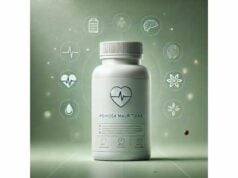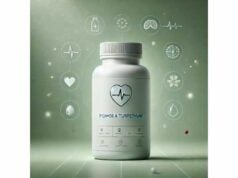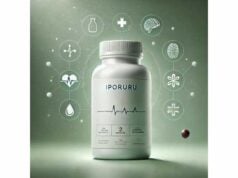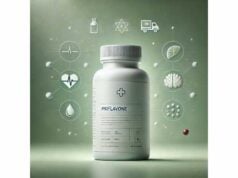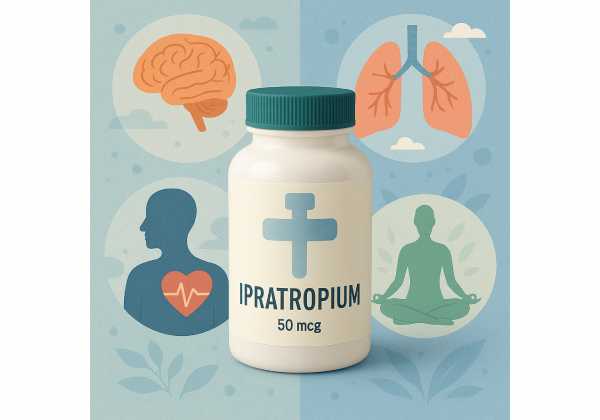
Ipratropium is a short-acting antimuscarinic bronchodilator used for relief of bronchospasm in chronic obstructive pulmonary disease (COPD) and, in some settings, as an add-on for acute asthma exacerbations. As a quaternary ammonium compound, it acts locally in the airways with minimal systemic absorption. It is available as a metered-dose inhaler, nebulized solution, and nasal spray for rhinorrhea. When used correctly, ipratropium can reduce breathlessness, improve airflow within minutes, and decrease cough and secretions without stimulating the heart. Still, it is not a rescue medication for sudden severe symptoms and does not replace controller therapies. This guide walks through what ipratropium does, who benefits most, how to use each formulation correctly, recommended dosing ranges, and safety points—so you can use it confidently alongside proven lifestyle and medical treatments for airway disease.
Quick Overview
- Short-acting muscarinic antagonist that eases bronchospasm in COPD within 15–30 minutes.
- Typical adult inhaler dose: 2 puffs (17 mcg each) four times daily; nebulizer: 0.5 mg every 6–8 hours.
- Nasal 0.06% spray reduces runny nose from colds or allergies; 2 sprays per nostril 3–4 times daily.
- Avoid eye exposure (risk of acute angle-closure symptoms) and use caution with bladder outlet obstruction.
- Not a standalone rescue for severe attacks; combine with short-acting beta-agonists as directed.
Table of Contents
- What is ipratropium and how it works
- Who benefits and when to use
- How to use inhalers and nebulizers correctly
- Dosage by condition and age groups
- Side effects, interactions, and precautions
- Evidence at a glance and FAQs
What is ipratropium and how it works
Class and action. Ipratropium bromide is a short-acting muscarinic antagonist (SAMA). It blocks acetylcholine from stimulating M3 receptors on airway smooth muscle. The result is bronchodilation—widening of the airways—plus a reduction in reflex bronchoconstriction triggered by vagal tone. Because ipratropium is a quaternary ammonium salt, it stays largely within the lungs and airways and is poorly absorbed into the bloodstream. That property explains its favorable cardiac profile and the rarity of systemic anticholinergic effects at usual doses.
Onset, peak, and duration. After correct inhalation, onset typically begins within 15–30 minutes, with peak effect around 1–2 hours. Symptom relief usually lasts 2–4 hours for the inhaled aerosol and nebulized solution. This duration is shorter than long-acting muscarinic antagonists (LAMAs) such as tiotropium, which is why ipratropium is scheduled multiple times per day for maintenance relief in COPD or given intermittently for acute care.
Formulations and their roles.
- Metered-dose inhaler (HFA): Delivers 17 mcg per actuation from the mouthpiece. Used on a regular schedule for COPD symptom control.
- Nebulized solution (0.02%): Commonly 0.5 mg per treatment, alone or combined with a beta-agonist during exacerbations.
- Nasal spray (0.06%): Targets rhinorrhea by decreasing glandular secretions in the nasal mucosa; it does not relieve congestion or sneezing.
How it differs from beta-agonists. Beta-agonists (like albuterol) relax airway muscle directly via beta-2 receptors and act faster as rescue medicine. Ipratropium reduces cholinergic bronchoconstriction and secretions. The two mechanisms are complementary, which is why combining ipratropium with a short-acting beta-agonist is common during moderate to severe exacerbations.
What ipratropium does not do. It is not an anti-inflammatory controller. It does not prevent disease progression, replace inhaled corticosteroids (for asthma), or provide long-duration maintenance like LAMAs. In an emergency, it should not be used as your only reliever.
Takeaway. Think of ipratropium as a short-acting bronchodilator and secretion-reducing option with a favorable safety profile, especially useful in COPD and as an add-on during flare-ups.
Who benefits and when to use
COPD (chronic bronchitis and emphysema). Adults with COPD often experience breathlessness driven by cholinergic tone. For these patients, ipratropium can improve airflow and reduce dyspnea with limited systemic effects. Short-acting bronchodilators are recommended for immediate symptom relief in all COPD patients, with ipratropium providing modest improvements in lung function and health status compared with short-acting beta-agonists alone. Many individuals still transition to long-acting bronchodilators for day-to-day control, but SAMA inhalers remain useful for breakthrough symptoms and as a step in personalized regimens.
Asthma (as add-on during exacerbations). Routine daily use of ipratropium is not standard for chronic asthma management. However, in emergency or urgent-care settings, adding ipratropium to a short-acting beta-agonist during moderate to severe exacerbations can improve airflow and reduce hospitalization rates, particularly in the early hours of care. Once stabilized, patients return to guideline-directed controller therapy (inhaled corticosteroids with or without long-acting bronchodilators).
Upper-airway symptoms. The 0.06% nasal spray formulation reduces watery rhinorrhea from the common cold or seasonal allergic rhinitis. It does not reduce congestion or sneezing—its value is in drying excessive nasal secretions for short courses (up to four days for colds, up to three weeks for seasonal allergies), which can improve comfort and sleep.
Special situations.
- Intolerance to beta-agonists: Patients who experience tremor, palpitations, or jitteriness with beta-agonists may favor ipratropium for routine symptom relief in COPD.
- Cardiovascular concerns: Because systemic absorption is minimal, ipratropium is generally neutral on heart rate and blood pressure at recommended doses.
- Elderly with polypharmacy: The local mechanism limits interactions, though anticholinergic effects (dry mouth, urinary retention) still warrant attention in susceptible patients.
When to consider alternatives. If symptoms are frequent or persistent despite SAMA use, long-acting bronchodilators (LAMA or LABA/LAMA), pulmonary rehabilitation, and risk-factor modification (smoking cessation) deliver larger and more durable benefits. For asthma, guideline-directed controllers are essential to reduce exacerbation risk and improve control; relying on ipratropium alone is inadequate.
Practical positioning.
- COPD: Keep a short-acting bronchodilator available at all times; ipratropium is appropriate for scheduled or as-needed use per clinician guidance.
- Asthma: Reserve ipratropium for exacerbations alongside a beta-agonist; do not use as sole reliever.
- Nasal symptoms: Consider ipratropium 0.06% for short-term watery rhinorrhea when congestion is not the main issue.
How to use inhalers and nebulizers correctly
Metered-dose inhaler (HFA) checklist.
- Prime a new or unused inhaler (after >3 days idle) with two test sprays away from your face.
- Exhale fully.
- Seal lips around the mouthpiece; keep tongue below the opening.
- Start a slow, deep breath and press the canister once to release the puff; continue inhaling steadily.
- Hold your breath for 10 seconds (or as long as comfortable).
- Wait ~30–60 seconds before the second puff if prescribed.
- Avoid eye exposure. If using a mask (pediatric or during severe dyspnea), ensure a tight fit to prevent medication mist reaching the eyes.
- Clean weekly: remove canister and rinse the mouthpiece under warm water, shake off, air-dry completely, and reinsert.
Nebulizer best practices.
- Dose and diluent: Use the exact ampule contents; do not mix other drugs unless directed.
- Seal and posture: Sit upright, use a mouthpiece (preferred) or a well-fitting mask, and breathe normally with occasional deep breaths.
- Protect the eyes: If a mask is necessary, check the fit; escaping mist can provoke acute, painful angle-closure symptoms in susceptible individuals.
- Timing: Typical treatment runs 5–15 minutes until the reservoir begins to sputter.
- Hygiene: Rinse, wash, and air-dry neb cup and mouthpiece after each session; disinfect per device instructions.
Spacer use for inhalers. Although ipratropium HFA does not require a spacer to work, many patients benefit from one, especially if coordination is difficult. A spacer can improve lung deposition and reduce oropharyngeal deposition, lessening local side effects like dry mouth or throat irritation.
Common technique errors (and quick fixes).
- Breathing too fast during actuation: Slow the inhalation to a steady 3–5 seconds.
- Actuating outside the mouth: Actuate only when the mouthpiece is sealed and inhalation is underway.
- Skipping priming: Re-prime after long gaps in use to ensure dose accuracy.
- Eye exposure: Use a mouthpiece when possible; adjust masks carefully; wipe any stray mist from the face.
When to reassess technique. Any time control slips, side effects rise, or you start a new device. Hands-on coaching from a clinician or respiratory therapist, even for a few minutes, markedly improves real-world benefit.
Dosage by condition and age groups
Always follow your clinician’s instructions and the exact product label for your country. The ranges below reflect common adult dosing used in practice.
COPD – inhalation aerosol (HFA).
- Typical adult dose: 2 inhalations (17 mcg each) four times daily.
- Maximum: Up to 12 inhalations in 24 hours unless otherwise directed.
- Onset/duration: Relief begins within 15–30 minutes; effect lasts about 2–4 hours, so regular scheduling provides steadier control.
COPD – nebulized solution (0.02%).
- Typical adult dose: 0.5 mg (500 mcg) via nebulizer every 6–8 hours.
- During exacerbations (supervised settings): Doses may be given more frequently in combination with a short-acting beta-agonist early in care, then spaced out as symptoms improve.
Acute asthma exacerbation (add-on).
- Adolescents and adults: Ipratropium 0.5 mg by nebulizer or multiple puffs by inhaler given with a short-acting beta-agonist during the initial treatment window, typically repeated for several doses under clinical supervision.
- Children (facility protocols): Lower nebulized doses may be used (e.g., 0.25–0.5 mg), again as add-on to a beta-agonist during moderate to severe attacks. After stabilization, continue standard controller therapy; ipratropium is not a routine daily asthma medicine.
Nasal spray 0.06% (ipratropium for rhinorrhea).
- Common cold (adults/adolescents ≥12 years): 2 sprays (84 mcg) per nostril 3–4 times daily; use up to 4 days.
- Seasonal allergic rhinitis (≥5 years): 2 sprays per nostril 4 times daily, up to 3 weeks.
- Important: It reduces watery discharge, not congestion or sneezing. Avoid eye contact when spraying.
Elderly and comorbid conditions. No routine adjustment is required for age alone. Because systemic absorption is minimal, ipratropium is generally well-tolerated; however, monitor for urinary retention in those with prostatic hypertrophy or bladder neck obstruction.
Pregnancy and lactation. Inhaled ipratropium has historically shown low systemic exposure and reassuring animal data. Because it acts locally, many clinicians consider it when benefits outweigh risks; discuss individually during pregnancy or breastfeeding.
When to step up or switch. If you need frequent short-acting doses for ordinary daily activity, that’s a sign to reassess your overall regimen: inhaler technique, adherence, long-acting bronchodilators, pulmonary rehabilitation, and risk-factor management.
Side effects, interactions, and precautions
Common side effects (usually mild).
- Dry mouth or throat, cough, or throat irritation after inhalation.
- Bitter/metallic taste reported by some users.
- Nasal spray: Nasal dryness and epistaxis (bloody or blood-tinged mucus) are the most frequent.
Eye safety—important. Mist contacting the eyes can precipitate or worsen narrow-angle glaucoma with symptoms such as acute eye pain, halos, blurred vision, and red eyes. This risk is greatest when using nebulized solutions with a loose-fitting mask. Protect the eyes with a mouthpiece, well-sealed mask, and careful positioning.
Urinary retention. Anticholinergic effects may aggravate prostatic hyperplasia or bladder neck obstruction. Seek care for difficulty urinating, lower-abdominal pain, or weak stream beginning after starting therapy.
Cardiovascular effects. At recommended inhaled doses, ipratropium is generally neutral on heart rate and blood pressure. Palpitations are uncommon and should prompt evaluation for technique errors (e.g., excessive dosing) or co-medications.
Paradoxical bronchospasm. Very rarely, inhaled medicines can trigger acute bronchospasm immediately after dosing. If breathing worsens right after a dose, stop the medication and seek medical attention.
Allergy and hypersensitivity. Discontinue and seek care for urticaria, swelling of lips or face, severe rash, or wheeze after dosing.
Drug interactions (what matters most).
- Additive anticholinergics: Using multiple anticholinergic agents (e.g., certain bladder or motion-sickness medications) can raise the chance of dry mouth or urinary retention.
- Beta-agonists: Co-administration is common and appropriate; each targets different receptors and can be synergistic during exacerbations.
- Glaucoma therapy: Coordinate with your eye specialist if you have narrow-angle glaucoma; extra care with delivery technique is essential.
Who should be cautious or avoid.
- Known narrow-angle glaucoma or a strong history of eye pressure spikes—unless eye exposure can be reliably avoided and your ophthalmologist is involved.
- Significant bladder outlet obstruction or severe prostatic symptoms.
- History of severe hypersensitivity to ipratropium or product components.
Practical prevention tips.
- Use a mouthpiece rather than a mask when possible.
- If you need a mask, check fit before each treatment; consider protective eyewear if leakage persists.
- Sip water or chew sugar-free gum after inhalation to ease dry mouth.
- Keep treatments regular but not excessive; more is not always better.
Evidence at a glance and FAQs
How strong is the evidence in COPD? Short-acting bronchodilators are recommended for immediate symptom relief in all COPD patients. Systematic reviews have found that ipratropium provides small but meaningful improvements in lung function and patient-reported outcomes compared with short-acting beta-agonists alone. For long-term maintenance, LAMAs and LABA/LAMA combinations usually offer greater efficacy and convenience, but SAMAs remain useful for relief and during stepwise adjustments.
What about asthma? In stable asthma, ipratropium is not a controller and is not first-line for daily relief. In acute moderate to severe exacerbations, adding ipratropium to a short-acting beta-agonist in the initial treatments can improve airflow and reduce the likelihood of hospitalization. After stabilization, controller therapy (inhaled corticosteroids, with or without long-acting bronchodilators) resumes center stage.
Does ipratropium dry secretions too much? Its main value in the nose is reducing watery discharge. In the lungs, it does not thicken mucus in a clinically problematic way at usual doses; studies show no adverse effect on mucociliary clearance in typical use. Hydration, airway clearance techniques (if advised), and correct inhaler technique all help maintain comfort.
Will it affect my heart? At recommended inhaled doses, ipratropium has minimal systemic exposure and is generally neutral on pulse and blood pressure. If you notice palpitations or dizziness, review your full regimen and inhaler technique with a clinician.
Can I use it only as needed? Many COPD users take ipratropium on a scheduled basis (e.g., four times daily) for steadier relief. Others use it before exertion or when symptoms flare. Your plan should match symptom patterns, other therapies, and daily routines.
How do I know it’s working? You should notice easier breathing and less chest tightness within 15–30 minutes. Over weeks, track rescue-medication use, walking tolerance, and nighttime symptoms. If you still rely heavily on short-acting medicines, ask about long-acting bronchodilators and pulmonary rehabilitation.
Key reminders. Ipratropium is a helpful tool for COPD symptom relief and for selected acute asthma care—but it is one piece of comprehensive airway management that also includes correct device use, vaccinations, exercise and rehabilitation, smoking cessation, and, when indicated, long-acting controller therapies.
References
- ATROVENT HFA – accessdata.fda.gov 2025 (Label)
- Atrovent® Nasal Spray 0.06% – accessdata.fda.gov 2003 (Label)
- 2025 – pocket guide 2024 (Guideline)
- Ipratropium – StatPearls 2024 (Reference)
Medical Disclaimer
This content is educational and not a substitute for personalized medical advice, diagnosis, or treatment. Airway diseases vary widely; always follow your clinician’s guidance on diagnosis, device technique, dosing, and step-up therapy. Seek urgent care for severe breathlessness, chest pain, bluish lips or face, confusion, or if symptoms worsen after taking a dose. If eye pain, halos, or sudden blurred vision occur after nebulization, stop treatment and get urgent ophthalmic assessment.
If this guide helped you, please consider sharing it on Facebook, X (formerly Twitter), or your preferred platform, and follow us for more evidence-informed health explainers. Your support helps us continue producing clear, trustworthy resources.



